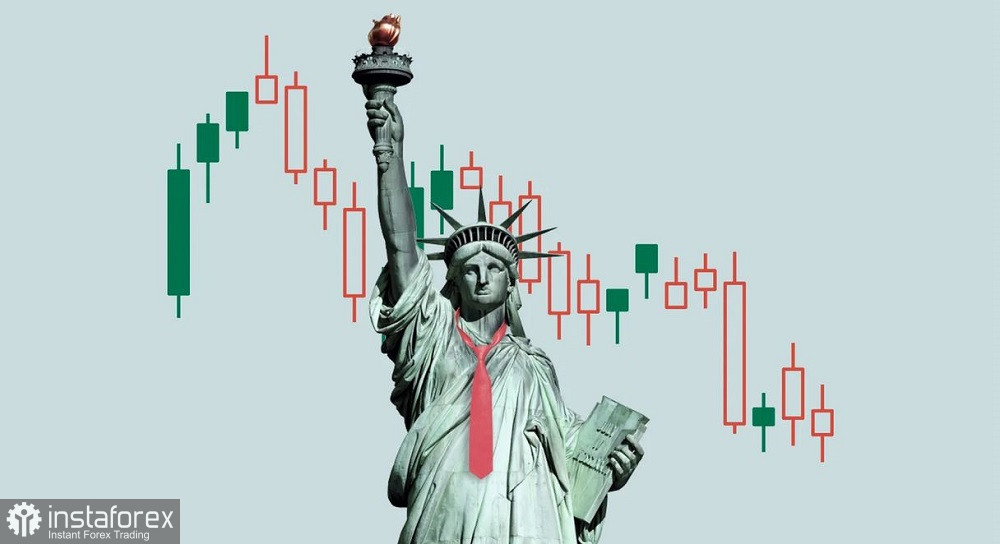Finally, after a two-and-a-half-month delay (initially scheduled for October 3), the U.S. Bureau of Labor Statistics released the official labor market data for September.

Non-Farm Payrolls are significant in their own right, but given the current circumstances, they have taken on special importance. The next official labor market report will not be available until December, when the November data will be released. Meanwhile, the October figures will not be published on time; according to BLS representatives, they were unable to collect the relevant information for the previous month due to a 43-day shutdown. Thus, the October results will be calculated and released simultaneously with the November data. Of course, the figures will not simply "add up"; each month will have its own employment growth value, revisions, and methodological explanations. Nevertheless, this will be a double publication, released next month.
Returning to the report, the reaction of EUR/USD traders was noteworthy. "In the moment," immediately after release, the pair set a new two-week low at 1.1503. However, buyers quickly recovered intraday losses and even set a new local high, moving toward the middle of the 15-range (1.1500-1.1600). The reasons for such price fluctuations are clear.
Initially, traders reacted positively to the "green" indications in the report, with many components exceeding expectations. However, upon a closer examination of the publication details, the dollar came under pressure.
Let's discuss the facts. According to the data released, the U.S. unemployment rate rose to 4.4% in September, while most analysts expected it to remain at the August level of 4.3%. Unemployment has been steadily increasing for three months, reaching its highest level since October 2021.
Meanwhile, non-farm jobs increased by 119,000, significantly exceeding the forecast of 53,000. However, the previous month's result was revised downward, showing a decrease of 4,000 jobs (instead of a 22,000 increase). Furthermore, the BLS also revised the July figures downward significantly, from +79,000 to +72,000.
The "wage" indicator (change in average hourly earnings) decelerated to 0.2% month-over-month, following two months of growth (0.3% in July, 0.4% in September). Year-on-year, the indicator remained at August's level of 3.8%, contrary to predictions of a decline to 3.7%.
Why did the market react so lukewarmly to what appeared to be a fairly decent report, with many components in the green zone? In my view, this is a case where "the devil is in the details."
Firstly, the market was unsettled by the substantial revision of previous months. In total, the number of jobs was found to be 33,000 lower than initially reported. This is a negative signal in itself. Moreover, such significant revisions undermine confidence in the sustainability of job growth. If the previous months were weaker, a relatively strong September could be seen as a "bounce" rather than a sustainable trend.
The second negative aspect is the rise in unemployment. As mentioned earlier, the unemployment rate hit its highest level in four years in September, despite a 119,000 increase in jobs. What do such contradictory signals indicate? They suggest that the percentage of people actively seeking work has increased. However, the economy has not been able to meet this heightened demand. Overall, the consecutive rise in unemployment signals a cooling of the labor market and a slowdown in the economy.
Following the release of the September Non-Farm Payrolls, "dovish" expectations eased somewhat, but not significantly. Prior to the release, the probability of a rate cut at the Fed's December meeting was estimated at 45-48% (according to CME FedWatch data), but it currently stands at 40%. Meanwhile, the likelihood of a 25-basis-point cut in January (assuming a pause in December) has risen to 54%.
In my opinion, the fate of the December meeting will be determined by the results of the upcoming "extended" Non-Farms, which will include data for October and November. Until then, the market is likely to assess the probability of a rate cut in December as 50/50. The September report has slightly bolstered hawkish sentiment, but has not become a decisive argument for resuming a downward trend for the EUR/USD pair.
From a technical perspective, sellers of the pair tested the support level at 1.1510 (the lower line of the Bollinger Bands on the four-hour chart), but could not sustain a move below it. The downward momentum has faded almost as soon as it began. Meanwhile, the price remains between the middle and lower lines of the Bollinger Bands—both on the H4 and D1 timeframes. Therefore, long positions should only be considered after the pair breaks above the resistance level at 1.1570 (the middle line of the Bollinger Bands, coinciding with the Tenkan-sen line on the D1). In such a case, the next targets for an upward bounce will be the levels of 1.1620 (the upper line of the Bollinger Bands on the four-hour chart) and 1.1670 (the upper line of the Bollinger Bands on the daily chart). Selling, in my opinion, looks risky as the U.S. labor market has not effectively become an ally for the greenback.





















